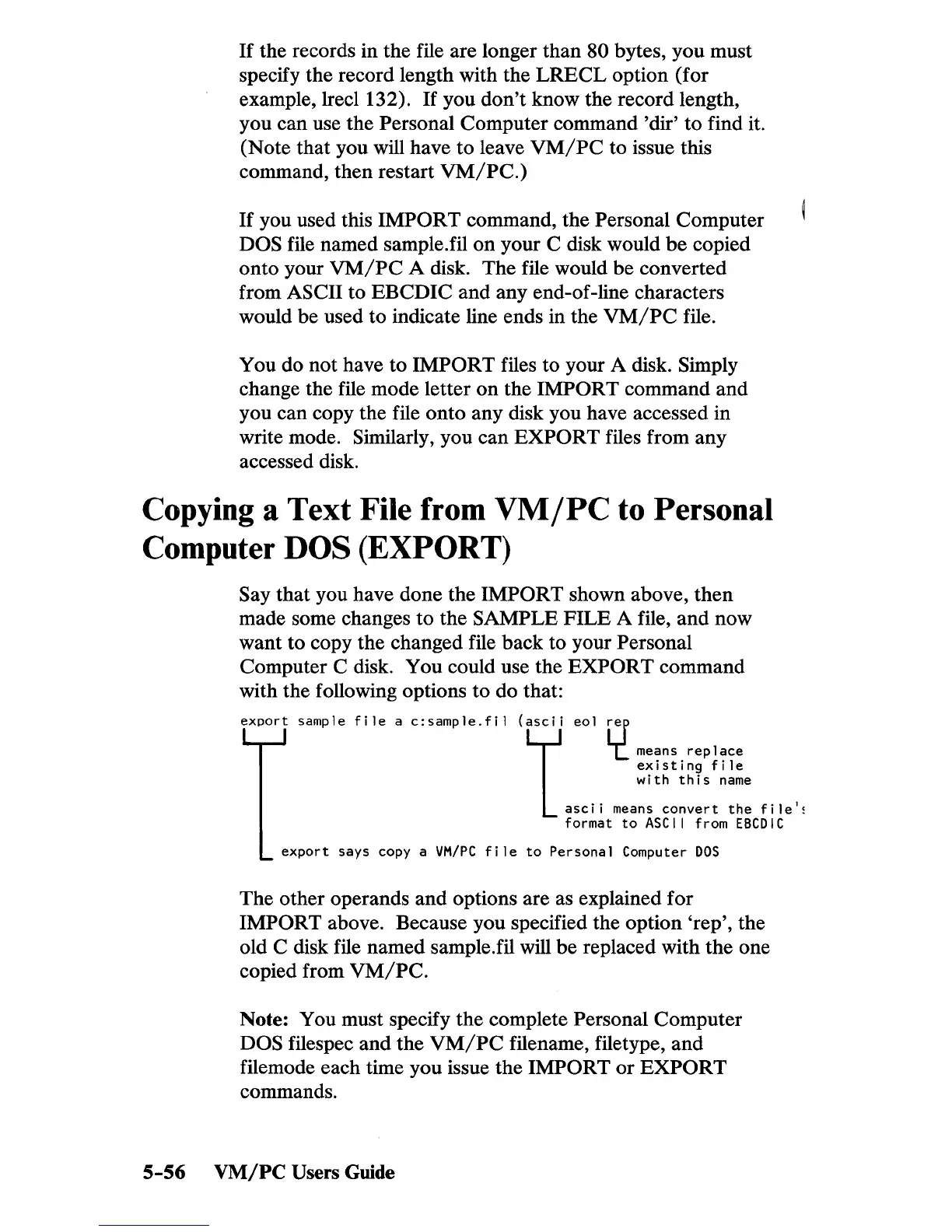If
the records in the file are longer than 80 bytes, you must
specify the record length with the
LRECL
option (for
example, Irecl132).
If
you
don't
know the record length,
you can use the Personal Computer command 'dir'
to
find it.
(Note that you will have
to
leave
VM/PC
to issue this
command, then restart
VM/PC.)
If
you used this IMPORT command, the Personal Computer
DOS file named sampleJil on your C disk would
be
copied
onto your
VM/PC
A disk. The file would be converted
from ASCII to EBCDIC and any end-of-line characters
would be used to indicate line ends in the
VM/PC
file.
You do not have to IMPORT files to your A disk. Simply
change the file mode letter on the IMPORT command and
you can copy the file onto any disk you have accessed in
write mode. Similarly, you can
EXPORT
files from any
accessed disk.
Copying a Text File from
VMjPC
to Personal
Computer
DOS (EXPORT)
Say that you have done the IMPORT shown above,
then
made some changes to the SAMPLE
FILE
A file, and now
want to copy the changed file back to your Personal
Computer C disk. You could use the
EXPORT
command
with the following options
to
do that:
export
sample
file
a
c:sample.fi
I
(ascii
eol
rer
L
ie:
means
replace
existing
file
with
this
name
ascii
means
convert
the
file'!
format
to
ASCI
I from
EBCDIC
export
says
copy a
VM/PC
file
to
Personal
Computer
DOS
The other operands and options are as explained for
IMPORT above. Because you specified the option 'rep', the
old C disk file named sample.fil will be replaced with the one
copied from
VM/PC.
Note: You must specify the complete Personal Computer
DOS filespec and the
VM/PC
filename, file type , and
filemode each time you issue the IMPORT
or
EXPORT
commands.
5-56
VM/PC
Users Guide

